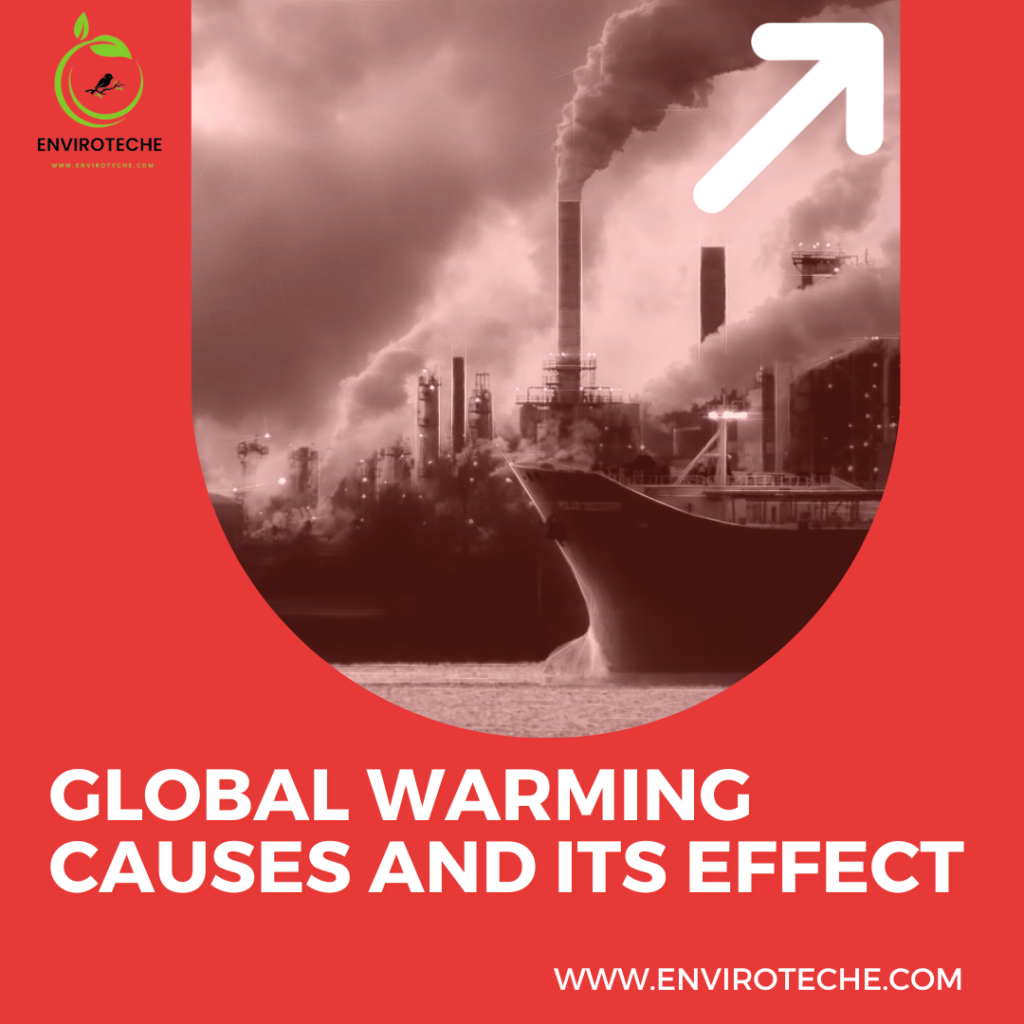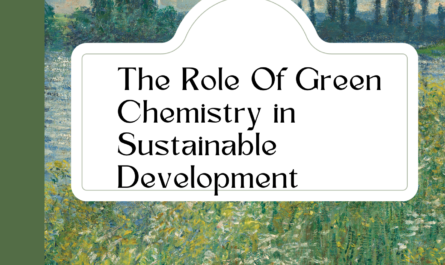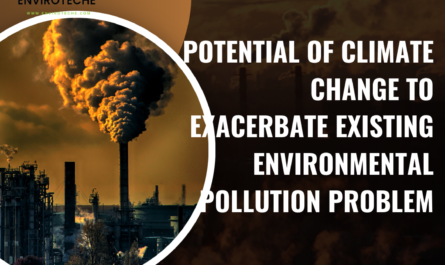
Global Warming Causes and its Effect
What is Global Warming?
The term “global warming” defines the gradual increase in Earth’s average temperature brought on by anthropological activity, particularly the atmospheric release of GHGs. Climate-related changes in parameters like temperatures, wind patterns, and precipitation are referred to as “climate change” since they occur gradually and get worse with time.
History of Global Warming? Global Warming Causes and its Effect
Since the late 19th century, human activity has been the primary cause of global warming, which has become a serious environmental concern. Fossil fuel combustion, deforestation, and industrial operations have all contributed to the atmospheric release of GHGs like CO2 and methane, which deception heat and cause a slow increase in global temperatures. As evidence of rising temperatures, melting polar ice caps, and an increase in the frequency of extreme weather events became apparent in the middle of the 20th century, this issue attracted substantial scientific and popular interest.
International initiatives like the Paris Agreement and the Kyoto Protocol seek to reduce emissions and lessen the effects of global warming. However, the globe was still struggling with the urgent need to cut emissions and adjust to the changing climate as of my most recent knowledge update in September 2021. This is because doing so will prevent more serious and widespread repercussions.
Causes of Global Warming
The excessive buildup of greenhouse gases, like (CO2), (CH4), and nitrous oxide (N2O), in the atmosphere of the planet is the main contributor to global warming. The sun’s heat is trapped by these gases and is kept from releasing back into space, leading to the “greenhouse effect.” These gases in the atmosphere have intensely increased as a result of human activities, primarily the burning of fossil fuels for electricity and transportation, forest destruction, and industrial operations.
Cold Weather and Earthquake
Extreme cold outbreaks are closely linked to human-caused climate change. The polar vortex is specifically being affected by warming temperatures, which is sending chilly air into unanticipated locations. When they hit the Earth in the winter, the rays of the sun are at a shallow angle. UV rays transmit less energy at a single spot because of their larger dispersion. The long nights and short days also prevent the Earth’s temperature from rising.
Although plate tectonics, the cause of earthquakes, can affect temperature over extensive geological timeframes, it has no impact on earthquakes. Pakistan is one of Asia’s most dynamic regions. It features a significant number of active faults and is located where three plate boundaries—the Indian, Eurasian, and Arabian—converge. In Pakistan, previous large earthquakes have destroyed infrastructure, property, and people.
Generating Power
Our planet is in danger of being extinct due to global warming, which is mostly caused by the constant combustion of fossil fuels like coal, oil, and natural gas. Large amounts of greenhouse gases, especially CO2, are released into the atmosphere through the combustion of these carbon-rich resources, trapping heat and accelerating the rise in the planet’s average temperature.
Manufacturing Goods
Fossil fuels are burned in manufacturing and industry to create energy for the making of goods including textiles, electronics, cement, iron, and steel, which accounts for the majority of emissions. Additionally, mining and other industrial operations release gases.
Cutting Down of Forests
Deforestation, a term used to describe the clearing of trees, has a huge negative impact on global warming through increasing greenhouse gas emissions. Through photosynthesis, which removes CO2 from the atmosphere and stores it in the soil and trees, forests serve as essential carbon sinks. Stored carbon goes back into the atmosphere when these forests are cut down or burned, amplifying the greenhouse effect and raising global temperatures.
Using Transportation
Transport networks exacerbate poor air quality and climate change by emissions by burning fossil fuels. Additionally, traffic leads to ecological disruption, contamination of water, and air pollution through a variety of both direct and indirect interactions.
Household Usage
The greenhouse gas emissions is influenced by several factors, including your residence, how you use power, how you move around, what you eat, as well as how much waste you make. The identical thing may be said of how things like plastics, textiles, and electronics are used.
Effects of Global Warming
Hotter Temperatures
The obvious result of global warming, which is primarily caused by an excessive buildup of greenhouse gases like carbon dioxide and methane in the atmosphere, is warmer temperatures in forests.
Severe Storms
As a result of climate change, global temperatures are rising. Warmer air can store 7% more moisture every degree of heat. This increases the likelihood of thunderstorms, which causes more intense storms and lightning strikes.
Increased Drought
Worldwide forest drought conditions have been made worse by global warming. Evaporation rates grow in response to rising temperatures brought on by the buildup of GHGs in the atmosphere, which lowers soil moisture content and prolongs dry spells.
Food Scarcity
World hunger and inadequate nutrition are increasing due to a number of reasons, particularly increase in extreme weather occurrences. Crops, fisheries, and cattle all have a chance to fail or yield less. The total amount of water and grazing areas in grasslands might be limited by heat stress.
Global Warming Potential
The global warming potential (GWP) of a GHGs is a comparison to carbon dioxide (CO2) in terms of how well it can trap heat in the Earth’s atmosphere over a given time period, usually 100 years. The effects of various greenhouse gases on the climate are measured and compared using this method.
Global Warming is a Reality or Myth
1. Global warming causes an ice age
It is generally accepted that periodic variations in the Earth’s orbit round the Sun trigger a chain reaction of favourable feedbacks that trigger ice ages. When orbital cycle reverses, these feedback mechanisms—involving spread of ice or the release of GHGs—work in same to warm the Earth once more. Some scientists contend that the heat trapped by the greenhouse effect in the Earth’s atmosphere will balance off this cooling and keep the world from experiencing another ice age.
2. Human Extinction
Climate experts have issued a warning that it is “dangerously under-explored” that global warming could lead to the extinction of humanity. As the world continues to warm and emissions keep increasing, a group of worldwide researchers has urged governments to start taking “worst-case scenario” repercussions into account. Humans may perish due to a catastrophic asteroid strike, a world nuclear war, or the ill effects of a climatic catastrophe. The most plausible scenario, given that we are a hardy race, is a series of catastrophes that might completely wipe out humanity.
Will Global Warming End the World?
The IPCC, a team of experts brought together by the UN, offers the most inclusive picture of how the world is changing. It is anticipated that, as long people endure to burn coal, oil, and natural gas, the average global temperature will rise by 1.5C afar preindustrial levels sometime in “the first half of the 2030s.”
According to the current analysis, there is still time to reverse direction. But to do this, wealthy nations would need to work together right now to reduce GHGs emissions by around half by 2030 and to stop emitting any new CO2 into the atmosphere by early 2050s. If those two measures were taken, there would be a 50% chance of keeping global heating to 1.5 degrees Celsius.
Future Perspective
The future is anticipated to bring about higher sea levels, a warmer added acidic ocean, a warmer atmosphere, and more major changes in rainfall patterns. The future of climate change will depend to reduce greenhouse gas emissions. By 2050, an additional 24 million children are anticipated to be underweight due to climate change. By 2040, it is predicted that one in four children would live in areas with severe water shortages. Children are affected by severe and extended droughts in about 160 million families.
Conclusion
The greenhouse effect has made the planet much warmer than it otherwise would be. It adsorbs solar infrared energy, which moves through the atmosphere before escaping as heat into space. Carbon dioxide is absorbed by plants and trees, which then release oxygen.
About the Author:
Aila Zahid1 , 2Muneeb
1Department of Soil and Environmental Sciences, University of Agriculture Faisalabad
2Department of Environmental Sciences, Government College University Faisalabad
Check Other Scholarships:
- FREE Earth-inspired courses
- The Graduate Application Portal for King Fahd University, Saudi Arabia is open.
- International Excellence Scholarship 2023-24
- Scholarship in USA
Global Warming Causes and its Effect Global Warming Causes and its Effect Global Warming Causes and its Effect Global Warming Causes and its Effect Global Warming Causes and its Effect Global Warming Causes and its Effect Global Warming Causes and its Effect Global Warming Causes and its Effect Global Warming Causes and its Effect Global Warming Causes and its Effect Global Warming Causes and its Effect Global Warming Causes and its Effect Global Warming Causes and its Effect Global Warming Causes and its Effect


